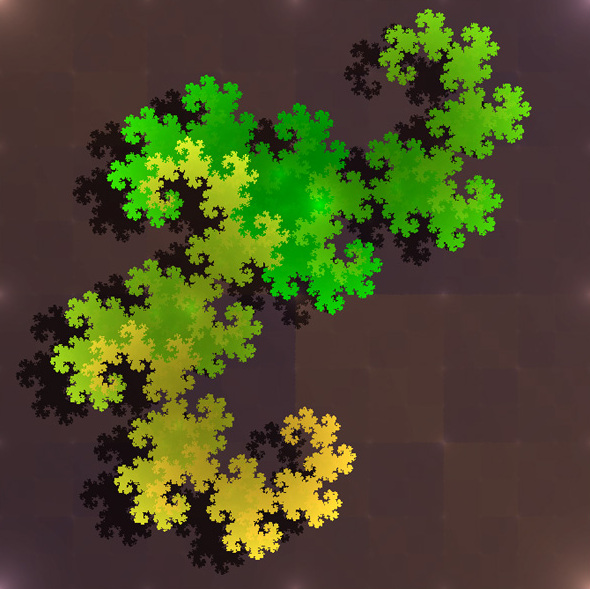|
Dragon Curve
A dragon curve is any member of a family of self-similar fractal curves, which can be approximated by recursive methods such as Lindenmayer systems. The dragon curve is probably most commonly thought of as the shape that is generated from repeatedly folding a strip of paper in half, although there are other curves that are called dragon curves that are generated differently. Heighway dragon The Heighway dragon (also known as the Harter–Heighway dragon or the Jurassic Park dragon) was first investigated by NASA physicists John Heighway, Bruce Banks, and William Harter. It was described by Martin Gardner in his Scientific American column ''Mathematical Games'' in 1967. Many of its properties were first published by Chandler Davis and Donald Knuth. It appeared on the section title pages of the Michael Crichton novel ''Jurassic Park''. Construction The Heighway dragon can be constructed from a base line segment by repeatedly replacing each segment by two segments with a r ... [...More Info...] [...Related Items...] OR: [Wikipedia] [Google] [Baidu] |
Fractal Dragon Curve
In mathematics, a fractal is a geometric shape containing detailed structure at arbitrarily small scales, usually having a fractal dimension strictly exceeding the topological dimension. Many fractals appear similar at various scales, as illustrated in successive magnifications of the Mandelbrot set. This exhibition of similar patterns at increasingly smaller scales is called self-similarity, also known as expanding symmetry or unfolding symmetry; if this replication is exactly the same at every scale, as in the Menger sponge, the shape is called affine self-similar. Fractal geometry lies within the mathematical branch of measure theory. One way that fractals are different from finite geometric figures is how they scale. Doubling the edge lengths of a filled polygon multiplies its area by four, which is two (the ratio of the new to the old side length) raised to the power of two (the conventional dimension of the filled polygon). Likewise, if the radius of a filled sphere is ... [...More Info...] [...Related Items...] OR: [Wikipedia] [Google] [Baidu] |
Regular Paperfolding Sequence
In mathematics the regular paperfolding sequence, also known as the dragon curve sequence, is an infinite sequence of 0s and 1s. It is obtained from the repeating partial sequence by filling in the question marks by another copy of the whole sequence. The first few terms of the resulting sequence are: If a strip of paper is folded repeatedly in half in the same direction, i times, it will get 2^i-1 folds, whose direction (left or right) is given by the pattern of 0's and 1's in the first 2^i-1 terms of the regular paperfolding sequence. Opening out each fold to create a right-angled corner (or, equivalently, making a sequence of left and right turns through a regular grid, following the pattern of the paperfolding sequence) produces a sequence of polygonal chains that approaches the dragon curve fractal: Properties The value of any given term t_n in the regular paperfolding sequence, starting with n=1, can be found recursively as follows. Divide n by two, as many times as possi ... [...More Info...] [...Related Items...] OR: [Wikipedia] [Google] [Baidu] |
Unicorn Dragon Curve
The unicorn is a legendary creature that has been described since antiquity as a beast with a single large, pointed, spiraling horn projecting from its forehead. In European literature and art, the unicorn has for the last thousand years or so been depicted as a white horse-like or goat-like animal with a long straight horn with spiralling grooves, cloven hooves, and sometimes a goat's beard. In the Middle Ages and Renaissance, it was commonly described as an extremely wild woodland creature, a symbol of purity and grace, which could be captured only by a virgin. In encyclopedias, its horn was described as having the power to render poisoned water potable and to heal sickness. In medieval and Renaissance times, the tusk of the narwhal was sometimes sold as a unicorn horn. A bovine type of unicorn is thought by some scholars to have been depicted in seals of the Bronze Age Indus Valley civilization, the interpretation remaining controversial. An equine form of the uni ... [...More Info...] [...Related Items...] OR: [Wikipedia] [Google] [Baidu] |


